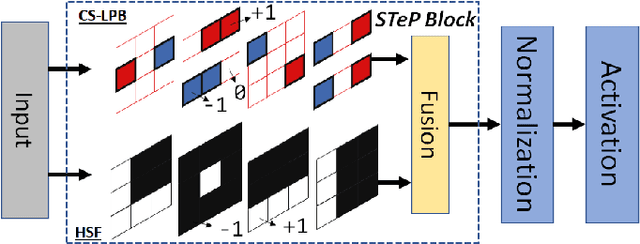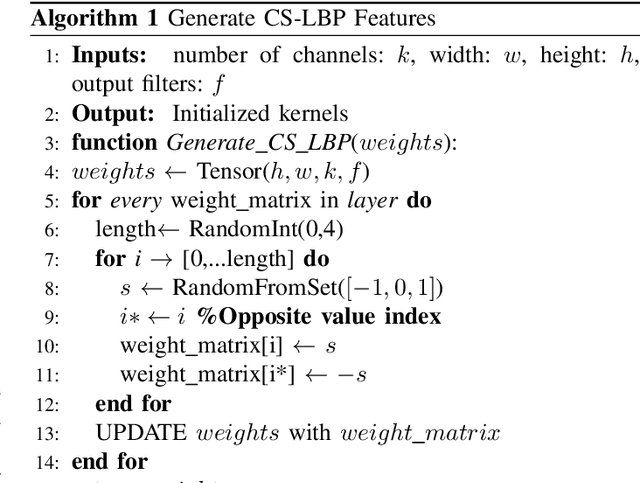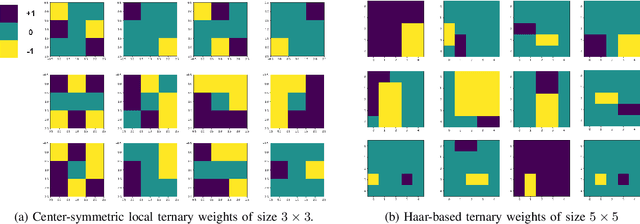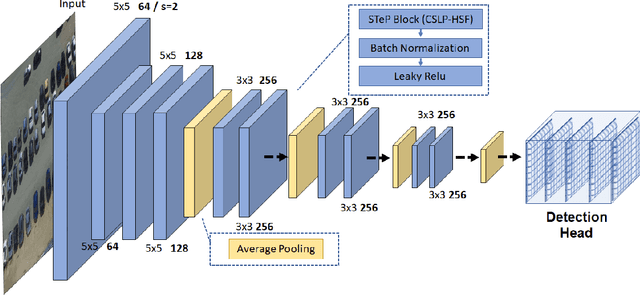Toward Efficient Convolutional Neural Networks With Structured Ternary Patterns
Paper and Code
Jul 20, 2024



High-efficiency deep learning (DL) models are necessary not only to facilitate their use in devices with limited resources but also to improve resources required for training. Convolutional neural networks (ConvNets) typically exert severe demands on local device resources and this conventionally limits their adoption within mobile and embedded platforms. This brief presents work toward utilizing static convolutional filters generated from the space of local binary patterns (LBPs) and Haar features to design efficient ConvNet architectures. These are referred to as Structured Ternary Patterns (STePs) and can be generated during network initialization in a systematic way instead of having learnable weight parameters thus reducing the total weight updates. The ternary values require significantly less storage and with the appropriate low-level implementation, can also lead to inference improvements. The proposed approach is validated using four image classification datasets, demonstrating that common network backbones can be made more efficient and provide competitive results. It is also demonstrated that it is possible to generate completely custom STeP-based networks that provide good trade-offs for on-device applications such as unmanned aerial vehicle (UAV)-based aerial vehicle detection. The experimental results show that the proposed method maintains high detection accuracy while reducing the trainable parameters by 40-80%. This work motivates further research toward good priors for non-learnable weights that can make DL architectures more efficient without having to alter the network during or after training.
 Add to Chrome
Add to Chrome Add to Firefox
Add to Firefox Add to Edge
Add to Edge